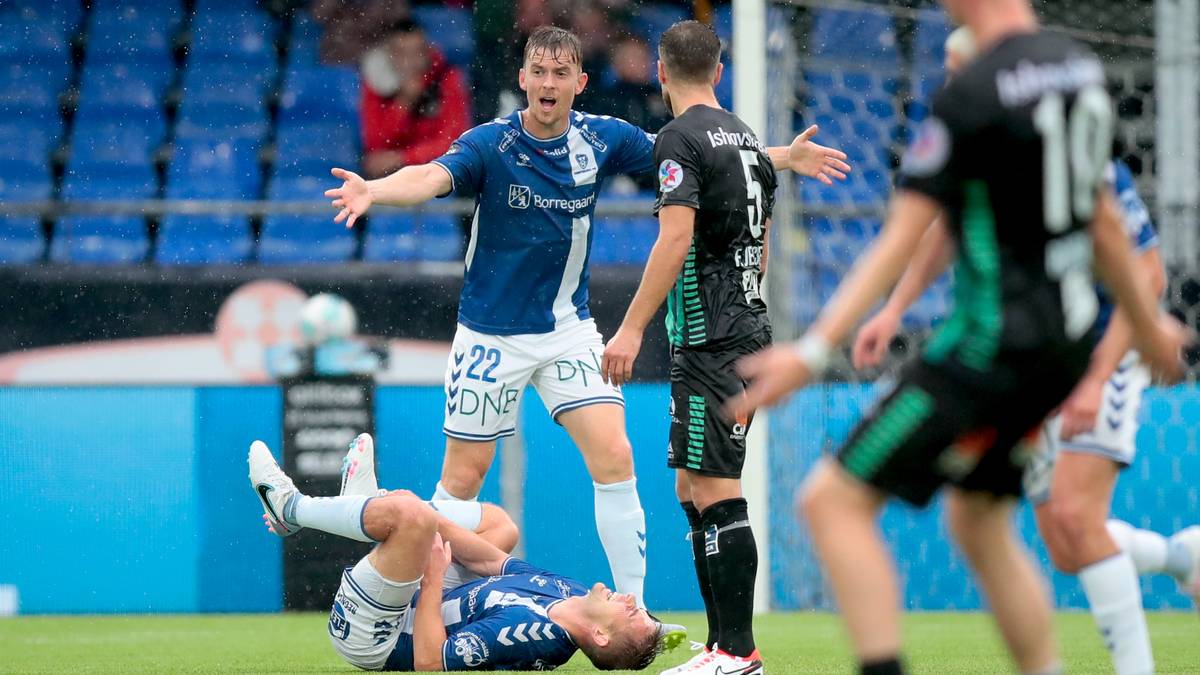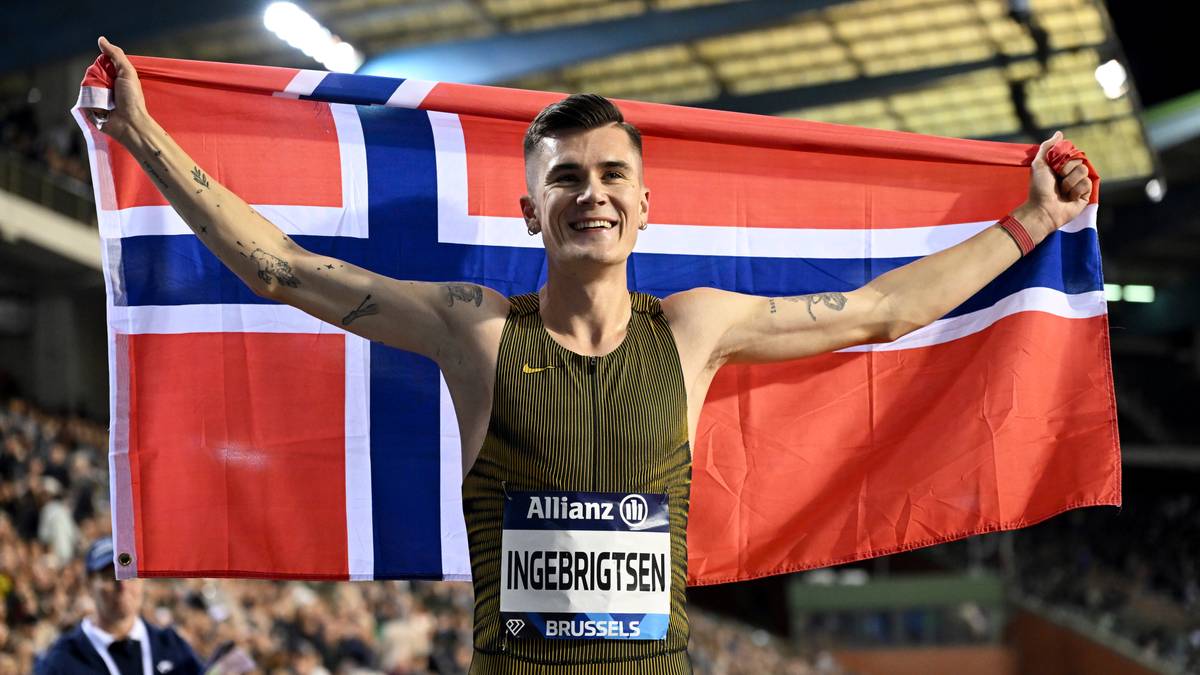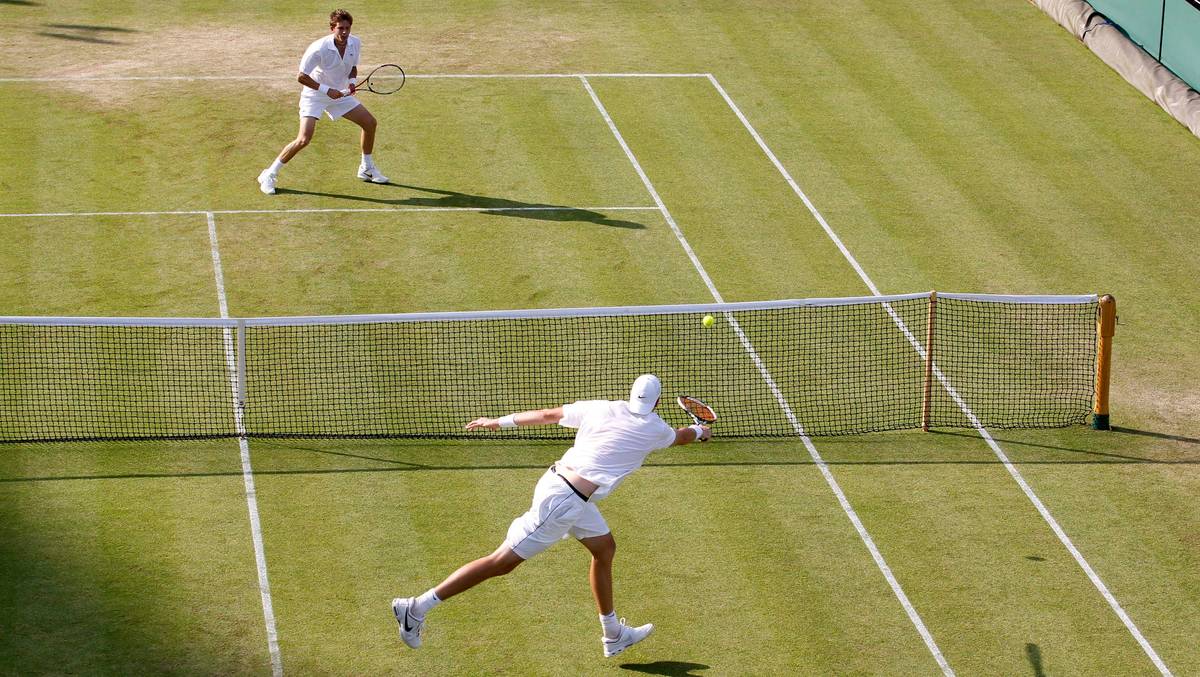If Pep Guardiola has ever seen Flåklypa, he might recognize Reodor Felgen. Both are brilliant inventors. Both of them are a team with a sheikh.
Both have assistants that have copied working drawings.
At Flåklypa, Felgen learns that Rudolf Blodstrupmoen, a former student, won a car race with an engine Felgen designed himself. In the Premier League, Mikel Arteta has taken Arsenal to the top in a system very similar to that of Guardiola.
INNOVATOR: Reodor Felgen (center) is known for his inventions. Here flanked by Ludvig (left) and Solan (right).
Photo: Maipo USA
Arteta was Guardiola’s assistant for three years at City. Arsenal are now eight points clear of the champions, who ran out of ideas when they lost to Manchester United on Saturday.
For more than a decade, Guardiola has invented new tricks to confuse opponents. But how long can he renew himself?

What now, Pep Guardiola?
Photo: Dave Thompson/AP
Study Magnus Carlsen
Guardiola’s gait at the top has been long. Most trainers are successful for a maximum of 10 years, before their ideas are copied and improved. Many struggle to find new tricks – and become out of date.
In 2015, José Mourinho spoke about how several of his assistants and colleagues, including André Villas-Boas and Brendan Rodgers, had become head coaches themselves.
– They brought with them everything I have done, everything we have done, all the knowledge, said Mourinho.
– New ideas spread quickly. So you need to make sure you have some fresh stock.
Since then, Mourinho has struggled, precisely because he has not renewed himself.

WHAT IT FINISHED: Manchester City supporters hold up posters with the faces of Pep Guardiola and then Manchester United manager José Mourinho in 2018.
Photo: BEN STANSALL/AFP
But Guardiola survives by innovating. Since taking charge of his first A team, Barcelona, in 2008, he has stuck to basic principles such as high pressure, lots of possession and free play from behind.
Within this framework, he has experimented. He doesn’t just steal ideas from other coaches; he has spoken to academics, directors and economists. He had studied how the basketball team stopped counterattacks. He dined with chess legend Garry Kasparov and discussed Magnus Carlsen’s strategy.

WORLD SENIOR: Chess player Magnus Carlsen.
Photo: ARUN SANKAR/AFP
Guardiola’s constant search for ideas has yielded “false nines”, full-backs cutting into the pitch, overlapping inside runners, goalkeepers making through passes and a long list of unusual formations.
Coaches who have met Guardiola’s team say there are always surprises: A winger hanging around here, a striker playing there. Guardiola is often accused of being too complicated, as a result of always thinking something new.
Guardiola’s success has been spectacular: at the top level, he has won 10 league titles in 13 years.
But now she’s battling a man who knows her secret better than anyone.
Bring textbooks with you
Arteta is what Mourinho described years ago: A know-it-all assistant to Guardiola, who copied textbooks in 2019 and brought him to Arsenal.
Arteta also has a deep understanding of the principles that inspire Guardiola.
Guardiola learned “his” football when he played for the Barcelona team from Johan Cruyff, a Dutchman who took ideas from the Ajax team that wreaked havoc with “Total football” in the 70s. From 1988 to 1994, Cruyff’s Barça were known as the “Dream Team”.

ICON: Johan Cruyff.
Photo: JULIAN MARTIN/AP
As a youngster, Arteta played at Barça’s academy, where these principles were used: high pressing, few touches, extra in the middle, attack in a few moves. Arteta likes the Dream Team.
This general understanding of how football should be played was one of the reasons why Guardiola wanted Arteta as an assistant in 2016.
Since then, Guardiola has made a number of adjustments to his team, so that it is less predictable.
Unfortunately for him, Arteta has been taking lessons.
System
Since Arteta took charge of Arsenal in 2019 he has used multiple systems, but the structure he plays in now is very similar to City’s. The formation is 4-3-3. The two side-backs stepped onto the pitch to create a surplus. When Arsenal finished the attack, they pulled to stop the counter-attack outside the penalty box.
It’s a move Guardiola has been making since 2014.
Arsenal like to build play down the left, then pass the ball to the right winger who widens play (Bukayo Saka). Since the right back (Ben White) is located in the middle of the field, wingers can challenge one on one. This is another classic from City.
Central is a smart ball winner. The inside right-handers are goal-threatening playmakers who move into space: Martin Ødegaard (Arsenal) and Kevin De Bruyne (City).
Arteta also brought in two players from City: Oleksandr Zintchenko and Gabriel Jesus.

SUCCESS: Martin Ødegaard and Arsenal can celebrate how the season has gone so far.
Photo: Frank Augstein/AP
Few thought that Arteta would implement this system so well. While he has seen it work for City, it will take immense belief, tactical acumen and teaching skills to do the same for Arsenal, who were 10th when he took the job.
Arteta has less experience than Guardiola. He coached a club with fewer resources. He has brought in names that were meant to be too bad for City’s first team.
Now Arsenal play “Guardiard football” better than Guardiola’s own team.
Tough race
With that, Arteta showed how difficult it is for a coach to stay at the top for a long time. Guardiola has inspired tacticians around the world for more than a decade. Some of them had competed against him. And some of them have beaten it.
Last Saturday, Guardiola lost against Manchester United, who are now one point behind City. United coach Erik ten Hag loves Cruyff’s football, and posed the question to the legend aged 13 on a TV show in the Netherlands where Cruyff was a guest.
In 2013, Ten Hag took charge of Bayern Munich’s second team in the German fourth division, partly because it gave him the opportunity to study Guardiola, who took over the A team the same year.
When Ten Hag took charge of Ajax in 2017, he used the tactical structure he learned from Guardiola.
Before the derby, Ten Hag was asked how much he had learned from Guardiola.
– There is too much to tell here, said Ten Hag.
Everywhere Guardiola turns he sees a coach who has studied him, and a part of his own football. As Reodor Felgen, he was involved in a tough race against his own students. For one of football’s greatest inventors, it has never been more difficult to be original.

“Infuriatingly humble coffee guru. Travel practitioner. Freelance zombie fanatic. Certified problem solver. Food scholar. Student.”





